3.3 Writer's Workshop: Persuasive Letter
| Site: | Cowichan Valley School District - Moodle |
| Course: | ELA6, CSS, Sferrazza |
| Book: | 3.3 Writer's Workshop: Persuasive Letter |
| Printed by: | Guest user |
| Date: | Wednesday, 17 December 2025, 6:54 AM |
Table of contents
- Preview- Persuasive Letter
- Writer's Notebook 1: Strong Position
- Writer's Notebook 2: Specific Audience
- Writer's Notebook 3: Make if Formal
- Writer's Notebook 4: Convincing Reasons
- Writer's Notebook 5: Counterarguments
- Writer's Notebook 6: Brainstorming Letter Ideas
- Writer's Notebook 7: Research and Planning
- Writer's Notebook 8: Persuasive Planning
- Writer's Workshop 1: Writing the Body of your Letter
- Writer's Workshop 2: Opening
- Writer's Workshop 3: Conclusion
- Writer's Workshop 4: Revising
- Writer's Workshop 5: Formal Letter Format
- Writer's Workshop 6: Editing & Proofreading
- Publishing
Writing Goal: Persuasive Letter
The persuasive letter is a powerful tool. You can use it to request a change or an improvement in an organization, company, community, or government. You can use it to complain and ask for compensation or better service in the future. You can state your case during a difficult situation and request for extra help or time.
Knowing how to write a persuasive letter can save you money and time. It can lead to changes that provide you with greater service and satisfaction. Youcan also write to help others or to make a change in your world -- be it locally or globally.
For example:
 Back in 1961, a British lawyer named Peter Benenson read an article about two students getting seven years in prison -- just for raising their glasses in a toast to freedom in Portugal. He was shocked and wanted to do something to help. So he wrote about this injustice in a newspaper article and asked people to join him in writing to the Portuguese government.
Back in 1961, a British lawyer named Peter Benenson read an article about two students getting seven years in prison -- just for raising their glasses in a toast to freedom in Portugal. He was shocked and wanted to do something to help. So he wrote about this injustice in a newspaper article and asked people to join him in writing to the Portuguese government.
Not only was there interest in Britain, but people from around the world joined in. This was the start of Amnesty International. It’s now a global organization that uncovers facts about human rights violations and then, through a network of members, writes letters to governments requesting change. (-image by Richard Potts via Flckr)
Today, more than 7 million people write letters through Amnesty International worldwide. Over the years, this has brought help to thousands of people around the globe. People have been set free or granted access to lawyers and medical help. Families have been reunited and others protected from torture and abuse. In 1977, Amnesty International won the Nobel Peace Prize for its positive impact on the world.
That’s the power of persuasion!
You are going to get to practice your formal letter writing skills. You are going to find a problem or issue that you think can be fixed. Then you will write to someone in power who might be able to help.
Workshop Overview: The Writer's Workshop consists of 2 parts.
Writer's Notebook:
- First, you need to learn about techniques and features of persuasion.
- Second, you need to choose an issue of importance to you, your family, your community, or your country that you have an opinion about. You want to convince someone to agree with your opinion.
- Then, you need to identify your position on the issue.
- Next, you need to research information about your issue to include in your argument and outline a plan for your letter.
Writer's Notebook:
- You need to write your letter.
- You will add an opening that will hook the reader.
- You will add a strong conclusion.
- You will learn to format it and to revise it to make it even stronger.
- You may even decide to send your letter.
Writing Targets:
By the end of this workshop you will have incorporated the following into your piece:
- A clear opening statement.
- At least three supporting points that are supported by facts, examples, statistics, quotations, and occasionally emotional appeals.
- You have identified and responded to an opposing view (called a counterargument).
- A clear closing statement.
- A highly persuasive argument.
- Proper letter format.
 Persuasive writing takes a strong stand. The message is clear.
Persuasive writing takes a strong stand. The message is clear.
Read the following statements. Do they sound very persuasive?
“I sort of think that the pipeline maybe isn't a good idea.”
“It could possibly help me if you would maybe vote for me as Kindness Club secretary. I might be able to do some stuff.”
“It might be an idea to visit the Eco-Store. Maybe you could bring your friends. We offer a discount.”
These statements sound weak and wishy-washy. They are not very convincing.
So how can they be written to be more convincing?
1. DELETE "I THINK" AND OTHER "I STATEMENTS".
Sentences become stronger when "I-statements" are removed.
I-statement examples are:
- I think...
- I believe...
- I know...
- I say...
Using I-statements makes your persuasive writing weaker because it highlights this information as your opinion. Also, by saying, "I think" or "I believe," it shows a level of uncertainty. By cutting out I-statements, it makes your writing feel more like a fact. People are swayed more by facts than opinion.
Example: I think it is a good idea to read a book every day for at least 30 minutes.
Change to:
Example: It is a good idea to read a book every day for at least 30 minutes.
2. MAKE CAREFUL VERB CHOICES.
Sentences become stronger when strong modal verbs are used. Modal verbs are used when we believe something is certain, probable, or possible.
Commonly used modal verbs are can, could, may, might, will, and must.
WEAKER MODAL VERBS
Could, might, can, and may are used when you think something might happen in the future, but you’re not positive:
-
-
- Based on the forecast, it might rain.
- You may want to buy this.
- It could be a good idea.
- It can be hot in summer. (= It is sometimes hot in summer)
-
STRONG MODAL VERBS
Must and will show we are sure about our beliefs or that something has to happen:
-
-
- You must buy this.
- You will buy this.
- Based on the forecast, it must rain.
- Based on the forecast, it will rain.
-
3. USE STRONG ADVERBS.
Sentences become stronger when strong adverbs are used. Possibly, perhaps, maybe, possibly, and definitely are all adverbs. They change the power of a verb in different ways.
- It will possibly rain. (small chance of rain, think 10-30% chance)
- Perhaps it will rain. (think 30-40% chance of rain)
- Maybe it will rain. (think 50% chance of rain)
- It will probably rain. (chances are good it will rain, think 80-90%)
- It will definitely rain. (for sure it will rain, think 100%)
If you want to be persuasive, make sure to cut out weak adverbs. It is better to just have a strong verb on its own. Definitely is definitely the best choice.
 |
In your Writer's Notebook, complete: 1. Strong Position |
 Persuasive writing targets a specific audience. The audience is who you will be giving your message to. Let's say your position was that rats should not be used in scientific research. You might present information differently if you were talking to a room of scientists who use rats to experiment on versus a room of members from an animal rights group.
Persuasive writing targets a specific audience. The audience is who you will be giving your message to. Let's say your position was that rats should not be used in scientific research. You might present information differently if you were talking to a room of scientists who use rats to experiment on versus a room of members from an animal rights group.
The room of scientists will likely be very skeptical of what you have to say and may not appreciate your topic. You would want to be very polite and careful with your words. You might want to address their concerns right away in your speech. You also want to make sure you have some serious statistics and figures to back your stance. Scientists are going to want facts.
If, instead, you were speaking to a group of animal rights activists, they would be receptive to what you have to say. You can be more lively in your tone and share your feelings more. You'd have probably found examples of the activities this group has been involved in to include in your speech. This would make them feel more connected to your message.
Knowing your audience is always important.
 |
In your Writer's Notebook, complete: 2. Specific Audience |
Your relationship to the audience is important. Use casual language if you are talking to a good friend or family member that is close to your age. Look at this email message below written to a friend but in formal language:
Dear Ms. Blackfoot,
I am writing to you with regards to arranging a time to meet and partake in a movie. I am hopeful that tomorrow night at 7 p.m. would be a time that would work well for you. Please let me know at your earliest convenience.
Best wishes,
Formal A. Writer
For most people, emailing a friend using such formal language would be rare. But when you are communicating with a teacher, politician, newspaper editor, or another leader, you do need to use more formal writing.
When we speak and write, we should be aware of how formal or informal we are. To get a closer look at the difference, watch this video.
In informal language, people use slang, shortened forms of words, and text talk. Do not use this in formal settings, including school assignments. See the chart below for some examples of the differences.
|
Informal- Formal thx - thanks gotta - have to |
LOL - That was very funny. my bad - I am sorry. way sucks - It's terrible. |
dunno - I don't know gonna - going to wanna - want to |
yeah - yes nah - no cuz - because |
Attributes of Formal Writing
- Does not use contractions (should not, cannot, did not)
- Does not use slang or text language (Slang is not tolerated in academic papers. No LOL, RN, GTG)
- Does use complex and longer sentences (This celebration dinner is an elegant event.)
- Does use bigger and more complicated words (The selection of food is of the utmost quality and deliciousness.)
- Does follow etiquette guidelines (Remembers to say please and thank you at all times.)
- Sounds very polite, can feel distant (I am very glad you could make it to our dinner tonight. Please enter the house.)
When to use formal writing:
- At school
- At businesses
- In academic (school) work
- With adults and people in authority
 |
In your Writer's Notebook, complete: 3. Make it Formal |
Persuasive writing needs to have convincing proof or evidence. If you are going to make a claim about someone or something -- you need to be able to back it up.
Simply saying that something is really good or that you like this person "because you said so" is not enough.
Appeal to both the heart and mind of your audience. They will emotionally connect to your writing. They will be more likely to believe what you say. You also need to give sound facts to appeal to their logical side, so they feel more secure in believing what you have to say.
Appeal to the Heart
 If you want to tap into people's hearts, include examples and stories that appeal to their emotions.
If you want to tap into people's hearts, include examples and stories that appeal to their emotions.
E.g. When giving a speech about how dogs make good pets, include a story about how a dog saved its owner's life.
E.g. When talking about the dangers of drugs, give an example of a family left heartbroken after their child died from an overdose.
Ask questions that are personal to appeal to the audience's emotions.
E.g. What would make you happy? Truly happy?
E.g. Have you ever seen someone get bullied? How did you feel in that moment? What did you do?
Appeal to the Mind
 Emotional appeals can draw people in, but their minds are still looking for the reasons behind your claims. They want proof. They will want to know the facts and hear your evidence before they will believe you.
Emotional appeals can draw people in, but their minds are still looking for the reasons behind your claims. They want proof. They will want to know the facts and hear your evidence before they will believe you.
Find quotes from well-respected experts in that field of study.
Give statistics from the latest research on the topic.
This kind of information will appeal to the logical mind.
E.g. A recent study, from the New School of Social Research in New York, suggests that reading fiction helps make people more empathetic.
E.g. Leading scientists from around the world agree that global warming is a threat to our planet.
 |
In your Writer's Notebook, complete: 4. Convincing Reasons: Heart and Mind |
 There will always be people who take the other side or see things differently than you do on a topic. Someone may totally disagree and even hate what you are saying!
There will always be people who take the other side or see things differently than you do on a topic. Someone may totally disagree and even hate what you are saying!
You need to be ready for this possibility.
Put yourself in the shoes of someone who wants to poke holes in your reasoning. See where your writing or speaking is the weakest and do some research to make your argument stronger. If there are any questions they might ask, be ready with answers. If writing, having it right in your essay will ideally leave them speechless. If speaking, you will be hard to argue against!
Not all persuasive text features a counterargument. But going through the process of being your own opposition will improve your writing (and your success in being persuasive).
Here is a look at why you should include a counterargument in your persuasive text.
Counterargument Example 1
Imagine you would like to get a cat. Your parent's counter with, "But your brother is allergic to cats." What will you say?
A rebuttal is when you respond directly to your opponent's argument/point to explain/show how/why they are wrong. Clever writer's even do this in their letters. Here are some rebuttal strategies you could use:
1. Point out the weakness in the counterargument.
E.g. Well, I heard you say that my brother is allergic but he was at Lisa's house where there is a cat and he was fine.
2. Agree with the counterargument but give them a new point/fact that contradicts their argument.
E.g. I agree that my brother is allergic to cats, but there are some breeds of cats that are more hypo-allergenic and won’t cause people’s allergies to act up.
3. Agree with the other side’s support but twist the facts to suit your argument.
E.g.. I know that you said he is allergic, but couldn’t owning a pet also build up his tolerance?
4. Make an emotional plea that outweighs their argument (This should be your LAST resort)
E.g. Well, you said that we can’t have a pet, but are my brother's allergies really more important when it comes to rescuing a poor cat from a shelter who’s trapped in a cage and will be killed if he doesn’t find someone to adopt him?
Counterargument Example 2
Topic: I am arguing in my essay that students should have access to more music in elementary schools.
Counterargument: Someone could argue it is too expensive to do this. Schools are already on tight budgets.
Rebuttal:
Some people will say schools are already strapped for cash. How are they going to afford a music program? If the community sees how important music is to the lives, minds, health, and education of children, then how could we say no? By finding the funding now to enrich children’s lives, we are making a positive investment. We are spending our money wisely on a better future.
Your Turn!
 |
In your Writer's Notebook, complete: 5. Counterarguments |
You are going to be writing a persuasive letter using a specific format. You need to choose an issue or concept that you have an "opinion" about or would like to see some action on, that is meaningful, and that you can support with facts and information in order to convince others that your opinion or idea is a reasonable one that has benefits for individuals or a community as a whole. You need to choose your topic carefully and it should be on the theme:
How can we contribute to/ improve something in the community and better care for or respond to an issue related to the environment?
The following ideas may appeal to you or you may have an idea of your own that is not on the list below. If you aren't sure about your own idea, ask your teacher. Remember, your idea should be meaningful.
1. Transit / expanding sky train or train service.
2. Students and volunteering.
3. Helping the homeless.
4. Bike paths.
5. Connecting with nature.
6. Destruction of the world’s forest is not justified by a human need for land and food. (What is the problem? What are the alternatives?
7. Garbage disposal should not be free to encourage recycling.
8. Do animals have rights? Using animals for scientific research is inhumane.
9. Pipelines should not be allowed on aquifers.
10. Leather and fur clothes should be outlawed.
11. Wind power plants help reduce effects of global warming.
12. Gardening should be required curriculum in schools.
13. Bottling Canadian water to sell.
14. Meatless Mondays should be mandatory.
15. All grade 6 students should be required to get a license for safe biking.
16. Anything related to actions to reduce climate change.
17. Allergy awareness
18. Acceptance of diversity / respect for human rights. Is there something in your community that can be improved?
19. Adopting versus buying pets from a pet store.
20. Mandatory screen-free hours for youth.
21. Senior citizens needs.
 |
In your Writer's Notebook, complete: 7. Brainstorming Letter Ideas. |
 Once you have chosen your topic you can begin your research.
Once you have chosen your topic you can begin your research.
Open your writer's notebook and complete 7. Research and Planning; Arguments For & Against.
Use the chart as you complete your research. Be sure to keep track of the websites and texts you use as you will be required to submit a bibliography.
Research your issue using a variety of sources, such as the Internet, newspapers, books, and magazines. You might even interview people who are involved or affected to hear their side of the story. Look for information that can be proven (facts rather than opinions) as it is most persuasive.
Be sure to include notes/information that will allow you to create three or more arguments that support your opinion and at least one counter-argument that opposes it for which you will create a rebuttal.
Now that you have completed your research, you are ready to create more elaborate plans for your letter. The more time you spend planning, the easier your letter will be to write. There will be less editing for you to do in the end and there will be better flow to your writing.
 |
In your Writer's Notebook, complete: 8. Persuasive Planning |
When you are finished:
Submit your Writer’s Notebook.
You've completed some research and made a plan. What is next? Now you will “connect the dots” and write out your ideas as full sentences and paragraphs.
Draft:
- First, you will draft the body of your letter.
- Second, you will draft the opening of your letter. (Yes, you will write the beginning AFTER you've written the body of the letter.)
- Third, you will draft a conclusion.
Then, you will revise, edit, and proofread your letter.
So, let's get started. Download the template here:
UNIT 3 WRITER'S WORKSHOP TEMPLATE
The following are suggestions when you write your first draft. There is a basic, one paragraph option for the body of your letter. If you'd like extra challenge, there is an advanced, three paragraph option (further down this page) for the body of your letter. Choose one or the other; either way, be sure to check out the tips at the end of this online page.:

Basic, One Body Paragraph:
Write one paragraph. It will contain:
- Topic sentence
- Reason one - one sentence telling reason, one - two sentences adding an example, fact, statistic, quote, or emotional appeals that supports the reason.
- Reason two - one sentence telling reason, one - two sentences adding an example, fact, statistic, quote, or emotional appeals that supports the reason.
- Save your best argument for your final reason:
- Reason three - one sentence telling reason, one - two sentences adding an example, fact, statistic, quote, or emotional appeals that supports the reason.
Advanced, Three Body Paragraphs:
Write one paragraph for each of three your main ideas. Each paragraph should clearly support your position. Save your best argument for your final paragraph.
Paragraph One:
- Topic sentence - First big reason to support your idea or opinion
- Supporting details: examples, research, facts, statistics, quotes, and/or emotional appeals that support the topic sentence
- May include a related counter argument and rebuttal (but this doesn't need to be in every body paragraph)
Paragraph Two:
- Topic sentence - Second big reason to support your idea or opinion
- Supporting details: examples, research, facts, statistics, quotes, and/or emotional appeals that support the topic sentenc
- May include a related counter argument and rebuttal (but this doesn't need to be in every body paragraph)
Paragraph Three:
- Topic sentence - Biggest reason to support your idea or opinion
- Supporting details: examples, research, facts, statistics, quotes, and/or emotional appeals that support the topic sentence
- May include a related counter argument and rebuttal (but this doesn't need to be in every body paragraph)
Additional Tips (for both one or three body paragraphs)
-
Try to use facts wherever you can, rather than just opinions. Facts are powerful persuaders.
-
Connect your arguments with transition words like however, furthermore, and in addition. Or you could number your points, e.g., firstly, secondly, etc. Here’s a list of commonly used transitional words and phrases:
|
and |
unlike |
in contrast |
in other words |
sometimes |
|
but |
however |
furthermore |
to sum up |
in addition |
|
or |
yet |
on the other hand |
consequently |
besides |
|
while |
unless |
similarly |
first |
likewise |
|
although |
therefore |
because |
next |
for instance |
One way to convince people about something is to write a persuasive argument. Persuasive letters can be written to newspapers, schools, businesses, community groups... even parents. A typical persuasive argument contains a powerful opening, a body with supporting reasons, and a convincing conclusion. In this lesson, we will focus on the opening.
Open Strongly
The opening of a persuasive argument is where you introduce the topic and state your position (point of view) on it. It should “grab” your reader’s attention and make him or her want to read on.
Here is an Example:
Did you ever wonder who made those designer jeans and fancy running shoes you’re wearing? If you found out it was a child working for pennies a day in a smelly, crowded factory, rather than going to school, would you still buy those clothes? I doubt it very much. Child labour is a serious problem in some parts of the world. We need to shop carefully so we don’t support businesses that employ child workers.As you can see, the opening of a persuasive argument catches your interest and introduces an important issue. It also includes the author’s position on the issue. Evidence to support that position will come in later paragraphs.
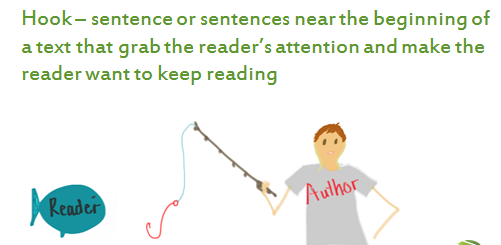
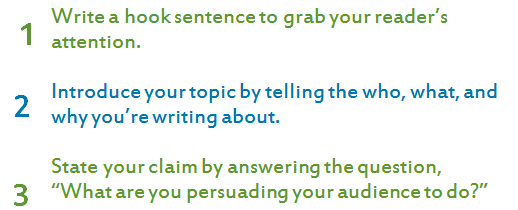
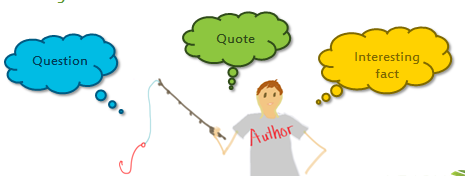
Is your topic one you'd like to actually send to someone? Who? Your school principal? The mayor? A city council? Your MLA (elected provincial member of the legislative assembly)? Your MP (elected federal member of parliament)? A local service club, store, or newspaper?
For your opening statement to be really effective, you need to know who will be viewing, hearing, or reading it. You should always keep these points in mind.
-
Does your audience know you?
-
Do you think your audience agrees or disagrees with your point of view?
You might need to add more points and examples for an audience that is not likely to share your point of view. Otherwise you could end up writing a persuasive letter that isn't convincing.
Your opening should be just a few sentences long to introduce your opinion or idea. It should introduce what you will explain in your body paragraph(s).
Open your Writer's Workshop Template and complete: Opening Draft.

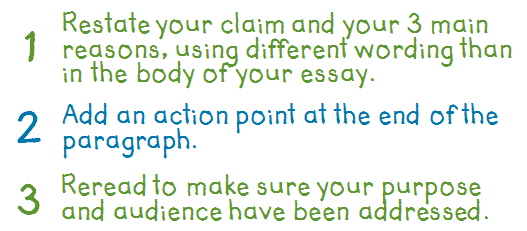
An action point is a sentence telling you reader what action they should take.
Once you've written your conclusion ask yourself;
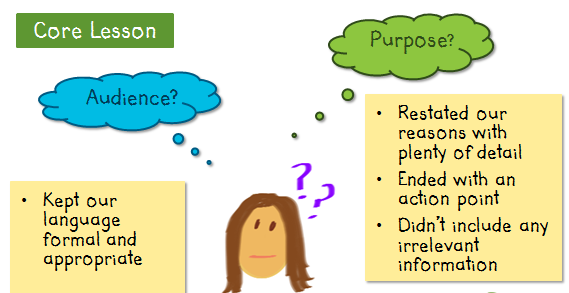
Open your Writer's Workshop Template and complete your Draft: Conclusion.
Revising is your chance to improve your first draft by adding, deleting, changing, and moving ideas around. You may need to revise your persuasive argument two or three times before you’re fully satisfied with it.
But first:
1. If completing this work on a computer document, copy and paste your opening, body, and closing into the "Revising" area of your Writer's Workshop document.
2. If completing this work on a printed document, in pen or pencil, find a different colour pen to complete your revisions. Your teacher wants to see your revisions!
Then, you are ready to revise.
As yourself these questions as you revise your work.
Opening:
-
Did I state my position clearly?
Body:
-
Is my position evident throughout my argument?
-
Are my opinions clear and do my facts support my opinions?
-
Do my ideas flow well together?
-
Do I stay on topic?
-
Did I mention one or more counter-arguments? Did I prove why they are wrong or insignificant?
-
Is my argument convincing?
- Do I have my strongest argument/reason last?
-
Does my information flow easily from one paragraph to another?
- Where can I add transitions?
Here’s a list of commonly used transitional words and phrases:
|
and |
unlike |
in contrast |
in other words |
sometimes |
|
but |
however |
furthermore |
to sum up |
in addition |
|
or |
yet |
on the other hand |
consequently |
besides |
|
while |
unless |
similarly |
firstly |
likewise |
|
although |
therefore |
because |
next |
for instance |
Closing:
- Do I restate my opinion and briefly summarize my main points?
- Do I give a call to action?
Remember, you learned this:
DELETE "I THINK" AND OTHER "I STATEMENTS".
These sentences became stronger because I-statements were removed.
I-statement examples are:
- I think...
- I believe...
- I know...
- I say...
Using I-statements makes your persuasive writing weaker because it highlights this information as your opinion. Also, by saying, "I think" or "I believe," it shows a level of uncertainty. By cutting out I-statements, it makes your writing feel more like a fact. People are swayed more by facts than opinion.
Example: I think it is a good idea to read a book every day for at least 30 minutes.
Change to:
Example: It is a good idea to read a book every day for at least 30 minutes.
CHOOSE STRONG MODAL VERBS AND POWERFUL ADVERBS.
STRONG MODAL VERBS
Must and will show we are sure about our beliefs or that something has to happen. Could, might, can, and may are much weaker.
POWERFUL ADVERBS
Possibly, perhaps, maybe, possibly, and definitely are all adverbs. They change the power of a verb in different ways.
If you want to be persuasive, make sure to cut out weak adverbs. It is better to just have a strong verb on its own. Definitely is definitely the best choice.
Revising your own writing:
Go through your letter.
- Eliminate "I statements".
- Change weak modal verbs to strong modal verbs.
- Change weak adverbs to powerful adverbs.
Copy and paste your revised letter into the template area for Writer's Workshop #5: Formatting, Editing, and Proofreading.
Then you can add the letter pieces edit, and complete a final proofread.You've drafted and revised all the parts of your letter and done some revisions. Now you can add the "parts" that turn it into a letter:
- heading
- date
- inside address
- salutation
- complimentary close
- signature
Here is a sample of what the format should look like.
SAMPLE LETTER
Here are the parts explained:
Salutation
When you address a letter to someone, it's called the salutation.
You should use Mr./Ms./Mrs. and then a first name followed by a last name. As you are not an adult yet, it is also fine to use the last name only.
Dear Mr. Person Lastname:
Dear Ms. Lastname:
Notice that after the last name, you need to use a colon (:).
Ideally, you find out the name of the person you are writing to. If you cannot, then you can use choices such as:
To Whom It May Concern:
Dear Madam or Sir:
Complimentary Close
The Complimentary Close is the part of the letter just above the signature.
Examples are:
Respectfully,
Sincerely,
Yours sincerely,
Best wishes,
Best regards,
Yours truly,
Notice how the examples have only the first letter capitalized and REMEMBER to put in the comma as well.
Signature
For your signature, you need to leave three or four spaces between the complimentary close and where you typed your name underneath. Signatures are usually done in handwriting under the complimentary close and above your typed name.
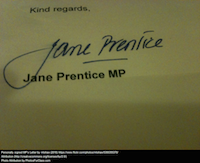
Before you get your revised, edited, and proofread draft ready to submit, you may like to know what your teacher is looking for:
(3 = fully meets, 4 = exceeds)
Proper use of the letter format /3
A strong, concise opening with a hook /3
Having at least three points/claims with convincing details to support them, at least one counter argument and rebuttal (3 x 4 point scale) /12
Revised to remove "I think" statements, strong adverbs/verbs /3
Proper spelling, grammar, punctuation /3
 Once you've gone through and made all necessary revisions, begin editing your essay.
Once you've gone through and made all necessary revisions, begin editing your essay.
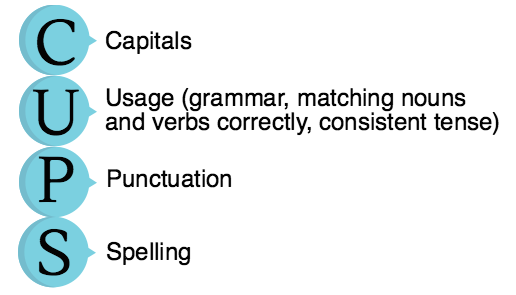
Editing is where you make sure everything reads smoothly.
Check that you have done each of these things:
Parts of Speech:
Did I use a consistent verb tense (e.g. past or present) throughout my writing?
Do my singular subjects have singular verbs and my plural subjects have plural verbs?
Did I use the best words in my writing?
Sentences
Do all my sentences express complete thoughts?
Have I eliminated run-on sentences from my writing?
Have I eliminated short, choppy sentences from my writing?
Have I eliminated long, rambling sentences from my writing?
Did I use a variety of words and phrases to start my sentences?
Have I eliminated words that don't add meaning to my sentences?
After you have edited your story, read it aloud slowly at least once. Let your ear tell you what sounds awkward or ungrammatical.
I have read my letter aloud at least once and made edits that I thought were needed.
Once you are satisfied with your editing, it's time to proofread your writing. Proofreading deals with the more mechanical aspects of your writing. Check your writing for these points.
Punctuation
Did I include a punctuation mark at the end of each sentence?
Did I use commas to separate items in a series?
Did I use commas before conjunctions (e.g., and, or, but) in compound sentences?
Did I correctly punctuate the dialogue in my writing?
Did I use apostrophes to show possession or missing letters (not plural)?
Capitalization
Did I begin each sentence and direct quotation with a capital letter?
Did I capitalize nouns that name specific people, places, and things?
Spelling
Have I double-checked the spelling of the names of people and places?
Did I use the correct word form for words that sound alike but have different spellings and meanings (e.g., their, they're, there; too, to, two)?
Did I use the spell-check function on my computer?
Paragraphing
Have I put an extra space between each new paragraph?
Sometimes it can be difficult to spot mistakes in your own work, so you could ask a friend or family member to proofread it as well.

Once you have:
- revised your first draft based on feedback from your teacher
- edited your work for COPS
- checked the rubric to make sure you have included all necessary elements
- you are ready to submit your final draft!
Submit your final 3.3 Published Persuasive Letter